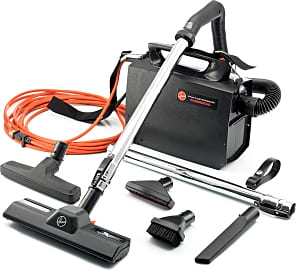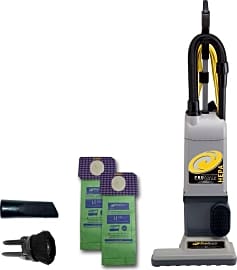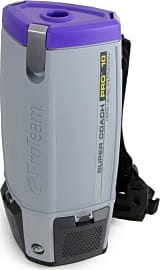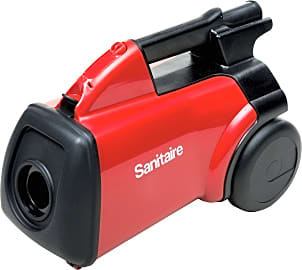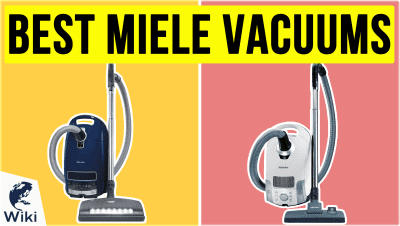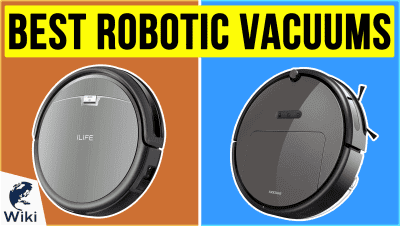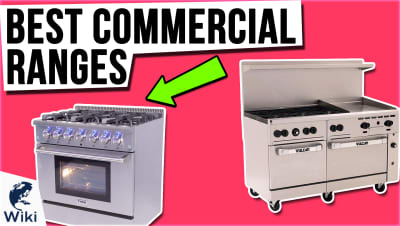The 9 Best Commercial Vacuums

This wiki has been updated 34 times since it was first published in October of 2016. If you need more power than a standard machine can produce, try one of these commercial vacuums. They come in upright and canister models, are designed specifically for frequent use, and are available with a number of features to meet the specialized needs of hotels, restaurants, offices, and shops, so regardless of how much space you have, you'll be able to keep everything neat and presentable. When users buy our independently chosen editorial choices, we may earn commissions to help fund the Wiki.
Editor's Notes
March 30, 2021:
Few changes were made to this Wiki this time around. We elected to no longer recommend the Prolux 7000 due to maintenance issues and the apparent scarcity of some replacement parts. The other update we made was upgrading the Sebo Essential G2 to the Sebo Automatic X4, which is highly lauded for its durability, moderate noise level, and ease of maintenance compared to even some of the most expensive options.
February 14, 2020:
If you have only a little space to cover, consider a smaller stick vacuum that runs on a battery, and if it will mostly be confined to use at home, check out our list of the top Miele vacuums, which are consistently rated among the best for consumers. But if you have a lot of wood and carpet to clean and you need to do it often, a commercial vacuum is the way to go.
There are a few brands that stand out in the category. The Sebo Essential G2 comes from a renowned manufacturer and its quality is partially evidenced by the impressive 5-year factory warranty. Sanitaire has a handful of excellent offerings as well, including the relatively simple Sanitaire 7-Amp and Sanitaire Canister. If you're especially focused on reducing the level of particles in the air, consider the Sanitaire Eon, which has a powerful HEPA filtration system, as does the ProTeam ProForce. The Prolux 7000 does as well, and this one's only drawback is that it can take a lot of elbow grease, especially when cleaning carpet.
If you need to cover a long distance and aren't enthused about an upright, check out the ProTeam Loaded Super Coach Pro and Hoover CH30000 PortaPower, both capable backpack-style units with plenty of suction power. And if you're okay with an upright but still want it lightweight and easy to use, it's hard to top the Oreck U2000R and Oreck XL.
Special Honors
CleanMax Zoom It doesn't have the advanced filtration systems of some others, but what it lacks in fancy technology it makes up for with long-lasting build quality and a light weight. It automatically adjusts the height as you move over different surfaces and the motor is internally protected against overheating. cleanmaxvacuums.com
Know Your Vacuum
A variation on the wet/dry model is the pneumatic cleaner, which is attached to compressed air and frequently used in industry.
When asked to imagine a vacuum cleaner, most Americans likely picture the upright models popular in the United States. But this design is actually quite uncommon in much of Europe, where canister models that separate the motor and the dust collector dominate the market.
Upright vacuums pull debris into a bag or cylinder that is frequently attached above the dust collector. Canister models feature a flexible hose, and boast maneuverability that many upright models lack. For this reason, a number of commercial vacuums bear a heavy duty canister configuration known as the drum model. Larger drum models are powered by compressed air, and can store in excess of 50 gallons.
For particularly wet commercial applications, there is the wet/dry vacuum cleaner, a variation on the drum model that is designed to intake dry and wet debris alike. A number of these wet/dry models also feature reverse flow functionality, making cleaning the vacuum and clearing clogs easier.
A variation on the wet/dry model is the pneumatic cleaner, which is attached to compressed air and frequently used in industry. Also popular in commercial applications is the backpack vacuum, which allows for supreme maneuverability and rapid movement.
Other designs include the robotic vacuum, the portable cyclonic vacuum made popular by Dyson, the central vacuum system built into some buildings, and the vacuum truck, which is essentially a giant cleaner mounted on a vehicle.
Portable vacuums in particular are much more likely to be found in the West because of the popularity of carpeting.
How Vacuum Cleaners Work
Vacuum cleaners generate suction by creating a difference in pressure between the air outside the vacuum, and the air inside it. An electric fan is used to reduce pressure inside the cleaner, creating a suction that forces air and debris through the dust collector.
Filter technology is an important part of modern vacuum safety.
Filter technology is an important part of modern vacuum safety. Because vacuums pull dust up from the ground into the air, it is critical that the air they exhaust be cleaned of potentially harmful dust. The safest of all vacuum systems in this regard is the central vacuum system, which vents dirty air outside of the room where the cleaning takes place.
Vacuum cleaners secure debris in a variety of ways, the most common of which is with a bag. A fabric or heavy paper bag that is permeable by air can trap a high percentage of dust and debris.
Bagless models feature a filtered, removable container or utilize cyclonic separation, which spins the dirty air so fast that dust is forced out of the air and into a collection bin.
Many early models used water to filter out debris, but this required vigilant maintenance, as dirty water was a breeding ground for bacteria and mold.
With effective filtering, vacuuming is especially useful for eliminating fleas, killing 96 percent of adults.
Make certain the vacuum cleaner you choose is appropriate for the job you intend to do. For instance, even commercial grade models with advanced HEPA filters are not appropriate for cleaning asbestos.
A Brief History Of Commercial Vacuums
The modern vacuum cleaner descends from a mechanical device known as the carpet sweeper. Sweepers feature a series of rolls and brushes that, when pushed along the floor, pick up debris and pull it into a surrounding box. This design was patented in 1876 by Melville R. Bissell, whose company became one of the largest manufacturers of vacuum cleaners.
The first powered cleaners appeared near the end of the 19th century, although most early variations pushed air, rather than pulled it. One such system used an internal combustion engine, and was transported by horse-drawn wagon when used by cleaning services.
Sweepers feature a series of rolls and brushes that, when pushed along the floor, pick up debris and pull it into a surrounding box.
In 1899 and 1900, the first patents for an air blowing system using an electric motor were secured by Corrine Dufour of Savannah, Ga. Then, in 1901, powered vacuum cleaners that used suction were invented independently by American inventor David T. Kenney and British engineer Hubert Cecil Booth. Booth is credited with coining the phrase "vacuum cleaner." Both designs were massive. Booth's required a horse-drawn combustion engine, while Kenney's was based on a 4,000 pound steam engine. These primitive cleaners were mostly used in commercial settings.
The first domestic vacuum cleaner quickly followed when, in 1905, British manufacturer Walter Griffiths revealed "Griffith's Improved Vacuum Apparatus for Removing Dust from Carpets." Unlike its predecessors, Griffiths' invention was large in name only. This portable model relied on a manual contracting bellows to suck up dust, was easily operated by a single person, and could be stored in a standard closet. Competing models from the era used water to separate dirt, and were challenging to clean.
Finally, in 1907 the first portable electric vacuum cleaner was invented by Canton, Ohio department store janitor James Murray Spangler. This model combined the best features of early vacuums with the rolling brush of carpet sweepers in a design that loosened debris and sucked it into what was initially a pillow case. Unable to bring the innovative design to market himself, Spangler sold the patent to leather goods manufacturer William Henry Hoover, whose name would become synonymous with vacuum cleaners.
The Hoover Company's first vacuum, called the "Model O," sold for what was a considerable amount in 1908. Among Hoover's subsequent improvements were the upright vacuum cleaner in 1926 and disposable filter bags in 1920.
After the World War II, vacuums moved from extravagance to commonplace in the American middle class.
Advances in suction technology and improved manufacturing techniques have improved both the effectiveness and durability of vacuum cleaners. Modern commercial vacuum cleaners combine high power with portability.




